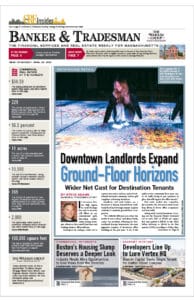
Bernice Ross
Frothy prices, affordability walls, inflation and interest rate increases – how will all this play out in in 2022? More importantly, where are the best opportunities to grow your business based upon the actual data, not simply someone’s opinion?
For over 25 years Attom Data’s RealtyTrac has been the go-to resource for updates on foreclosures, underwater sellers, and other important trends that impact the residential real estate market. I recently interviewed Rick Sharga, the executive vice president of RealtyTrac, about the trends he’s seeing in the company’s data as well as what to expect in 2022.
According to Sharga, the largest portion of the millennial generation is currently between ages 29-32. RealtyTrac’s data shows the prime age to purchase your first home is 33. In other words, the next three to five years will see the demand from this age cohort peak.
After this large cohort ages beyond their mid-30s, Sharga expects a more balanced market. He also believes that interest rates will normalize even though the Federal Reserve currently plans to raise rates at least three times this year.
Would you like to spend your time prospecting where your conversion rate will be 35 to 45 percent? According to the 2021 NAR Home Buyer and Seller Generational Trends Report, 45 percent of Millennials age 22-30 had been in their home two to three years when they decided to sell, and another 35 percent had been in their home four to five years.
You can target this group through a paid list from one of the many real estate data providers out there. Facebook and Google ad campaigns allow you to target specific demographic groups. You can also contact your local title company to get a list of owners who have been in their homes between two to five years and are between the ages of 22-30.
This approach not only generates a listing, but a trade-up sale as well.
‘Frothy’ Prices Hit the ‘Affordability Wall’
Sharga says the economists he relies upon expect about a 5.7 percent price increase this year with interest rates at about 4 percent by the end of 2022. Coupled with inflation, this will create an “affordability wall” that will “start to bring things back closer to being realistic.”
Sharga doesn’t believe we’re in a bubble due to the strength of the demand and the high quality of loans being made today as compared to previous downturns.
“We certainly can’t have the 16 to 19 percent appreciation we saw in 2021 for a very long before we do enter bubble territory. That’s just that’s a given,” he said. “I don’t think we’re in bubble territory yet, which is hard for me to say out loud when we’re talking about a year when prices went up by 16 percent nationally, and 45 percent in places like Boise, Idaho.”
Sharga went on to explain that part of the rise in prices has been due to the lack of inventory in the first-time buyer market. This has resulted in fewer first-time buyer transactions, which declined around 36 percent to around 30 percent in 2021. As a result, he doesn’t foresee any major changes in this market segment.
Anecdotally, however, he noted RealtyTrac is starting to see price reductions in the high end of the market in the San Francisco Bay Area, coastal California, and the Pacific Northwest. He also said that given how fast the Austin and Dallas-Fort Worth markets have appreciated, they may expect price reductions as well.
In other words, if you work in an area where the appreciation has been 15 percent or more, you may be seeing some price reductions this year, especially in the higher price ranges in your market.
Track Absorption Rates to Predict Market
This is a back-to-basics tip that has withstood the test of time. Almost all MLS providers track months of inventory on the market. Changes in the number of months of inventory are the best precursor for predicting what prices will do six to 12 months from now.
To interpret what will happen:
- Five or fewer months of inventory indicates a seller’s market with increasing prices.
- Six months of inventory indicates a transitioning or flat market.
- Seven months or more of inventory indicates a buyer’s market with decreasing prices.
The secret here is to track how much inventory is on the market in the niches you serve, rather than tracking the overall market. This way, you can be prepared for when your market levels off or starts to decline in value.
Bernice Ross is a nationally syndicated columnist, author, trainer and speaker on real estate topics. She can be reached at bernice@realestatecoach.com.




